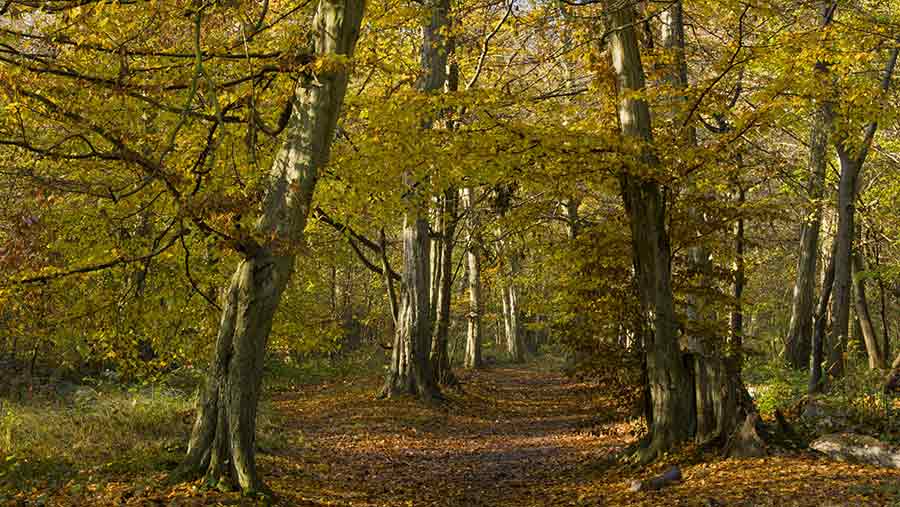Woodland and forestry could provide important income stream
 © FLPA/REX/Shutterstock
© FLPA/REX/Shutterstock Farmers could make better use of woodland and forestry to reduce business risk as direct support for agriculture comes under further pressure, say advisers.
While much is made of diversification as part of business planning, the opportunities presented by planting trees or active management of existing woodland on farms have received far less attention, said Mike Tustin, a chartered forester with specialist forestry agent John Clegg & Co.
“It is estimated there is more than 1m hectares of trees currently undermanaged, predominantly in the south-east of England. Bringing these back into production could produce an income stream for landowners relatively quickly.”
See also: Strong timber prices lift interest in farm woodlands
Timber prices have risen in the past few years and have had a more recent boost with the drop in the value of the pound, while woodland and forestry values have rocketed.
Wood for energy
“There has been a resurgence in the market for energy wood, thanks to the boom in biomass boilers and woodburners, along with the introduction of the Renewable Heat Incentive. It means woodlands that were not worth maintaining 10 years ago are now looking financially attractive.
“The weaker pound has already pushed timber prices up 10% since the EU referendum vote. If, as a result of Brexit, this situation is sustained it could mean greater demand for home-grown timber, as imported product will look expensive.”
Tax benefits
Favourable tax treatment for commercial forests and grant funding to establish new woodland mean farmers should consider setting aside some of their more marginal land for forestry, said Mr Tustin.
While schemes to encourage tree planting were often overly bureaucratic, they were worth exploring.
Forestry was simple to manage and generated good returns, he said. It could integrate well with existing enterprises, use land that may be less suited to food production and bring wildlife and biodiversity benefits.
‘Top-performing asset type’
“Everyone knows about the dramatic growth in farmland prices over the past decade. However, forestry land has actually been the top-performing asset type in the UK over the past 15 years, generating returns of well over 10% a year.
“Over the past decade, capital growth has been just shy of 20%/year, with forestry land values rising from £2,000/ha to £8,000/ha,” said Mr Tustin.
“A lack of recent planting also means a shortage of home-grown timber is predicted, beginning to affect the industry in about 20 years’ time. Investors planting productive new forests now will be in an excellent position to benefit from this.”
However, grants should only be used if they offered financial support to a landowner’s own objectives. Blind following of grant aid could lead to less-productive woodland, warned Mr Tustin.
2060 goal
The government and forestry sectors have a shared ambition to achieve 12% woodland cover in England by 2060.
Defra has just announced the re-opening of the Woodland Creation Grant which offers funding for new woodland that can be shown to provide public benefits.
Meanwhile, in Scotland ministers have set an ambitious target of 10,000ha of new plantings each year and have the Forestry Grant Scheme in place to achieve this.
